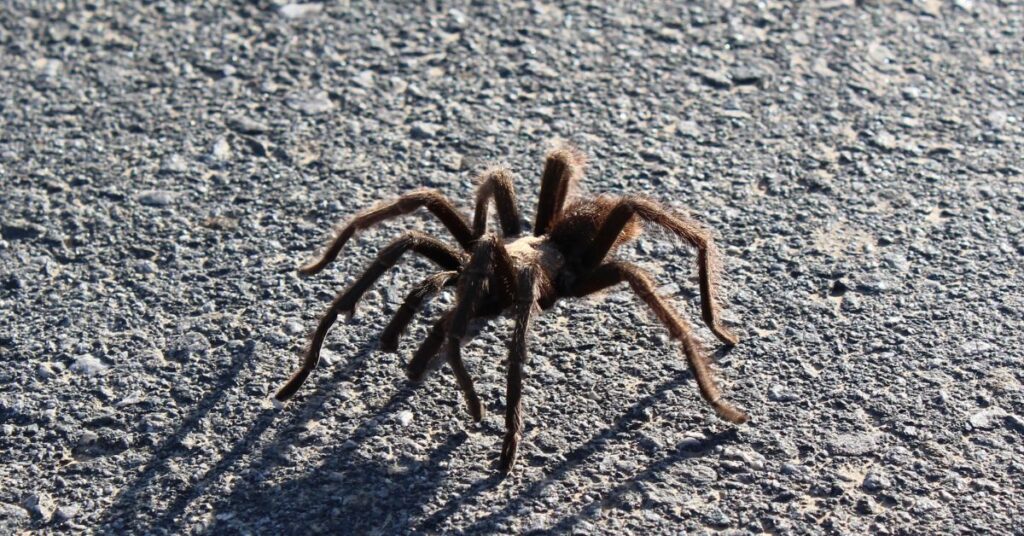
As the weather turns cooler, male tarantulas can be seen roaming around Colorado. They live there all year round, it is only once a year they become more active and easily seen. What we intend to answer is what causes this and what is the Colorado Tarantula Migration?
Towards the beginning of September until early October, male tarantulas in the southern and southeastern part of the state will leave the safety of their burrows to search for females, which stay hidden in their own ones. They can travel up to a mile looking for the right female.
So, whilst not a “migration” as such, it certainly looks like one as you are likely to see many male tarantulas making this journey. Let us now go into a bit more detail about why this happens.
Which Genera are involved in the Colorado Migration?
All of the tarantulas in Colarado are of the Aphonopelma genus. Male tarantulas have longer legs and a smaller body than females in order to help them scuttle around searching for their partner.
Male tarantulas can live for about a decade and reach sexual maturity when they get to about 7 years old. Females can live a lot longer than that, at least 25 years and reach maturity between 8-10 years.
Mating
Once the male tarantula has reached sexual maturity (at about 7 years old in this case), he will create a sperm web.
Once he has deposited enough sperm onto the web, he will fill his pedipalps with sperm before setting off to find a lady.
Upon finding one, he will begin to drum (tapping his front legs on her webbing) signalling to the female that he is here to mate and not be eaten. If the female is interested, she’ll begin to drum back, and the courtship will be initiated.
When it comes to actually mating, the female tarantula will rise up and the male will inject his pedipalps into her containing the sperm.
If he is lucky, she will remain in a trance-like state, allowing for him to make his getaway, but on occasion it does happen that the female decides she fancies a post-coital snack and eats him.
This isn’t as harsh as it sounds, as by design, after maturing, a male tarantula doesn’t live very long anyway. Whether it be death by predator or starvation, after mating a male tarantula is living on borrowed time.
Are They Aggressive?
The Aphonopelma genus is a new world tarantula which means they are definitely not as aggressive as some tarantulas. In fact, they are known to be docile creatures and their first fight response would be to flee rather than bite.
They also have urticating hairs so would rather “kick hairs” at you than bite. However, kicking hairs is a sign of defence and can be extremely irritating to the skin, throat (if breathed in), and eyes.
In general, they will tolerate a little handling as long as you don’t make any sudden movements. (Notice the bald patch on its abdomen).
Where can I see this Phenomenon?
The recommended place to view this occurrence is on Highway 109, Comanche National Grassland near La Junta and Springfield.
The scrubby grassland, which is a lower altitude compared to the Front Range, contains more than 400,000 acres for recreating.
The ideal time for viewing this spectacle is an hour before sunset, the tarantulas tend to retreat to their own burrows after 1am.
To be in with the best chance of witnessing this act, keep an eye out for tarantula hawks – the spider hunting wasps that prey on tarantulas. Where there are tarantula hawks, there will be tarantulas.
We hope we’ve covered the basics. The Colorado tarantula migration really is a sight to behold and attracts thousands of curious folk each year. Definitely worth seeing!
